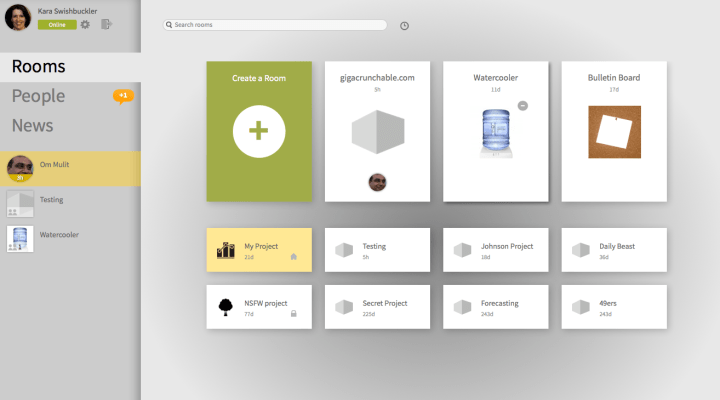Online communication tools for business are many, but as someone who has used a fair number of them in his life, I can tell you there’s still room for improvement. That’s what Unison hopes to provide, with its mobile, web and desktop based tool that combines elements of standards like Campfire and Yammer with principles of real-world interaction to hopefully making working with a distributed team feel less distributed.
“We’re trying to combine this concept of a physical space where you can see who is where, along with the idea of a social network where you can see a stream of stuff,” Unison co-founder Rurik Bradbury explained in an interview. The new version of the Unison web app, introduced this week, is intended to “visualize the physical spaces where people are working.”
Unison is intended to strike a balance, by providing the kind of serendipitous experience that comes from actually running into people in the halls of an office, but also without the excess noise and distraction that Bradbury claims is endemic to the first generation of social enterprise tools.
In practice, that ends up feeling quite familiar to approaches taken by others like Socialcast, Yammer and Convo, but the added effort to make things feel like an analogue to the physical world does seem to do a better job of keeping elements separate from one another. But keeping things distinct isn’t always great in an enterprise workflow, since you could miss something important if it’s in a room where you don’t normally visit.
Still, as of this latest version users can tag others in order to push a message from any room to that person’s main feed, meaning they won’t miss out on essential information. The distinction could keep the main feed clear, where it can become cluttered in other products by default when users don’t know where to find settings to turn off extraneous feeds and information.
Bradbury thinks that Unison is at the beginning of a very long-term play, that sees the company taking advantage of what he says is just the beginning of enterprise adoption of tools like these. It’s definitely true that while some of us may be tired of trying platform after platform with relatively similar purposes and implementations, finding the right recipe for mass appeal hasn’t happened yet, and Unison represents another try at getting it right.
